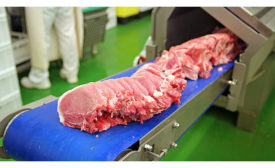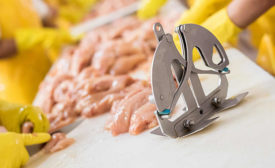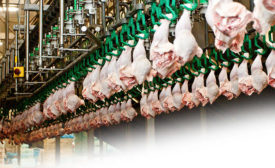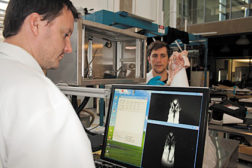Home » Keywords: » trimmings
Items Tagged with 'trimmings'
ARTICLES
Processing Tech
Tight labor market pushes processors toward automation of trimming and deboning operations
Not in the 'manual'
Read More
Processing Technology
Better tracking of yield loss
Deboning screening system could improve cutting and trimming operations in poultry plants.
Read More
Get our new eMagazine delivered to your inbox every month.
Stay in the know with The National Provisioner's comprehensive coverage of the meat and poultry processing industry.
SUBSCRIBE TODAY!Copyright ©2024. All Rights Reserved BNP Media.
Design, CMS, Hosting & Web Development :: ePublishing





